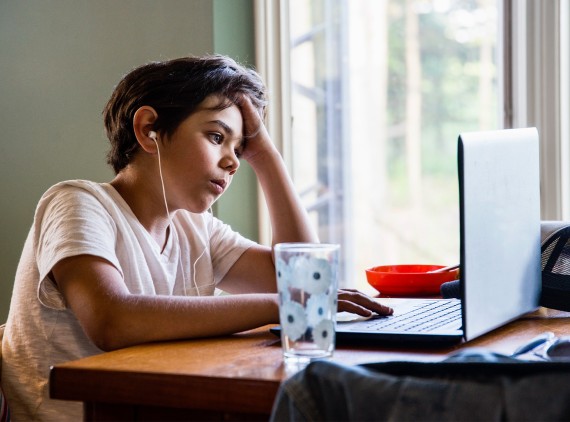In the era of multimedia and COVID-19, several questions have arisen:
- How much screen time is okay for children with headaches?
- How can parents control screen time effectively in pediatric headache patients?
- Given the need for screen time for virtual classes, what can be offered to help lessen negative effects on pediatric headache patients?
More than ever before, pediatric headache patients are watching TV, scrolling through social media simultaneously and are now participating in online schooling for several hours a day as we navigate the COVID-19 pandemic.
The risk of headaches and migraines with increased screen time in young adults was published in December 2015 in the headache journal, Cephalalgia. Previous studies have shown headaches are linked to screen time exposure for children between 10 and 12, as well as adolescents. It has also been found that screen time exposure is linked to low back and shoulder pain in adolescents. More screen time is a significant trigger for recurrent headaches. The American Academy of Pediatrics recommends parents of kids and teens ages 5 to 18 years old place consistent limits on the use of any media, which includes entertainment media, like watching TV and movies as well as educational media like practicing flashcards on a smart phone app.
Take time to discuss the importance of screen time limits with your child. Every child is different and what works for one child may not work for another. We’ve compiled a few tips to help guide conversations with your child and loved ones around screen time limits during a time when our lives seem to be going entirely virtual.
Limiting Access
Depending on your child’s age, limits can be placed on electronic devices as well as home internet access control so availability of screen time for children does not become a problem.
Privilege
Returning to screen time being a privilege as opposed to a right can be challenging but is an important part of maintaining a healthy screen time per day allowance.
Role Modeling
Parents can and should limit their own screen times. It’s important to discuss screen time with your teens and adolescents so that everybody has a healthy relationship with electronics and with each other.
Screen-Free Times
Have screen-free days during the weekend or even scheduled breaks during the day with no screen time.
Non-Screen Activities
Participate in non-screen activities like reading books, playing outside enjoying nature, doing written homework, helping out with family chores and sleeping.
Physical Activity
It is important to encourage physical activity throughout the day when children are exposed to screen time for multiple hours per day. This physical activity will not only help them physically but socially as well as mentally.
Eating
Children should be eating three meals a day (breakfast, lunch, and dinner) and should be encouraged not to have screen time at the table but more family time. You can also consider a morning snack if a child has a long period of time between breakfast and lunch.
Prioritizing Screen Time
Some recommendations for limiting screen time in headache patients include prioritizing screen time. School being a first priority, second social media for a limited time and third any other use of screen time.
Breaks During Long Screen Time
Frequent breaks during online school online should be taken for around five to ten minutes per break.
Posture
Children should be seated in a way that is not going to cause stress to their back, neck or shoulders while doing online learning. They should not be in their bed to do any schoolwork or have any screen time in bed, even during the day.
Device Settings to Reduce Light
There are settings on most computers and digital devices for night time settings, which can limit the blue light exposure. You may also consider blue light-eliminating glasses or screen covers.

